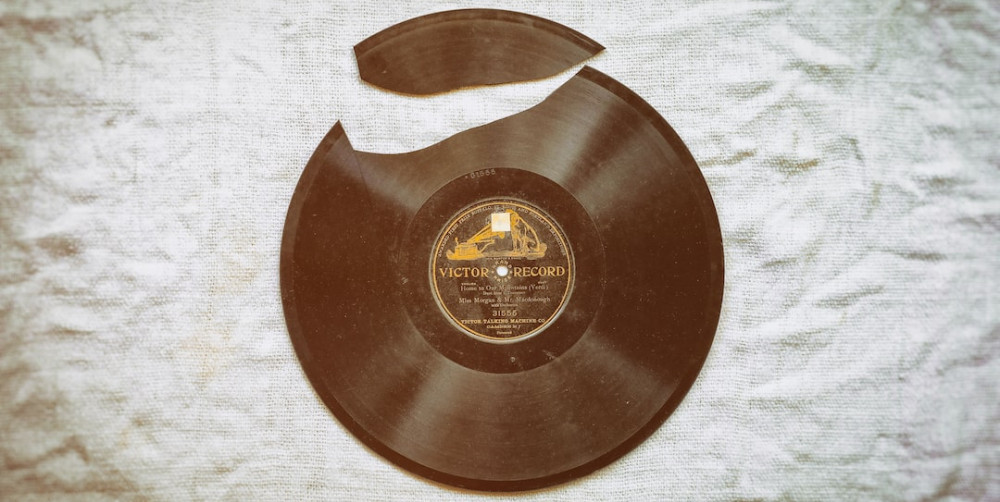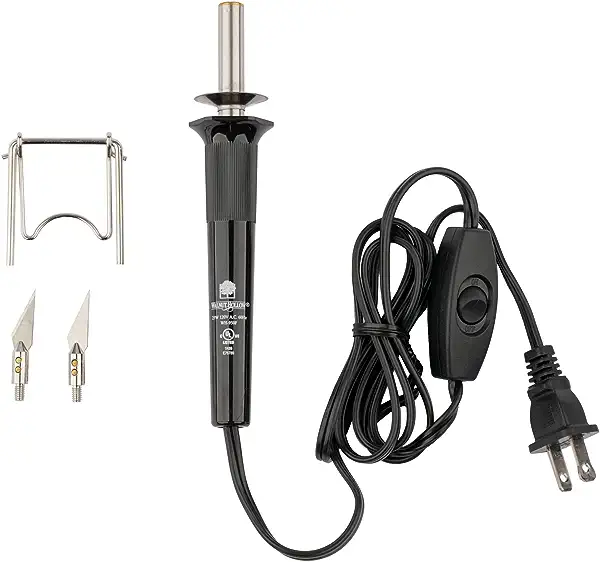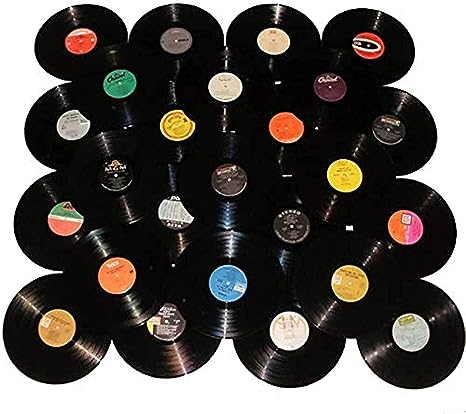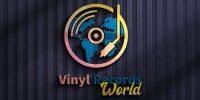As an Amazon Associate, I may earn commissions from qualifying purchases from Amazon.com, Amazon.ca or Amazon.co.uk. This post contains at least one Amazon affiliate link. You can read my Affiliate Disclosure here.
 You may have thought this website was all about the joy of listening to vinyl records. You may, therefore, colour yourself surprised to find an article called “What can you do with old vinyl records?”
You may have thought this website was all about the joy of listening to vinyl records. You may, therefore, colour yourself surprised to find an article called “What can you do with old vinyl records?”
First, let me put your mind at rest. I do not advocate doing anything other than playing, listening to and enjoying your records. However, once they have arrived at that point in their lives when they are not in any state to do those three things with, why not repurpose them?
You know how it is, maybe they have warped out of shape or perhaps they have been scratched to the point of no return. Obviously, if you have been looking after them properly, this is highly unlikely to have happened, but just in case. Or you might be a creative type who would love to work in the medium of vinyl records.
Hopefully, here are some great ideas to get your creative juices flowing.
Paint your vinyl
Why don’t you paint an evocative scene on your old vinyl record? There are paints available that will adhere to vinyl, so the only limit on what you can do is your imagination.
If you’re not confident that you can paint freehand, there are plenty of stencils available out there for you to use.
Form it into something else
Heat causes warping. Who knew? Heck, it’s probably why you’re contemplating doing this. But if heat can make them warp into something that you don’t want, how about using heat to meld them into something that you do? Many websites suggest that this is a good use for your old vinyl and advocate using the oven to do it.
However, I would advise NOT doing this at all. Heating vinyl is going to emit harmful fumes even at relatively low temperatures. These will include, but are not limited to, carcinogens.
Make it into something else
You can repurpose your old vinyl by cutting it into a different shape. Bearing in mind my previous warning about using heat from your oven to change its shape, I am now going to suggest that you will need to use a hot knife to change the shape of your vinyl.

Made by Walnut Hollow, this hot knife is a great tool for cutting and carving foam and plastics including vinyl. It seals edges for a clean professional look and comes equipped with two hot knife blades and a tool stand.
It heats up quickly and gives good precise cuts. It is especially effective when curves are being cut. However, it does cut quite slowly and could do with a little more power to be a showstopper.
When you do this, please ensure that you wear appropriate safety gear. A mask is an absolute must for this task. Also, if you are able, make sure your working space is actively ventilated. If that is not possible, do the job outside or, if you are working inside, make sure the windows are open.
You can cut vinyl with cold instruments, but this way your cuts are not going to necessarily come out the way you intend. You will find that they are just too brittle to cut without breaking into jagged, irregular pieces. Even doing it this way, you will need to wear a mask as tiny particles of vinyl are not something you want to inhale.
Template
If you are super confident or have an abundant supply of expired vinyl to practise on, you may feel that you just want to go for it. However, the rest of us mere mortals will likely need a template.
Fix your template to your record and trace around. Ideally, a chalk pen is best as the contrast with the vinyl means your traced outline will be easy to see. Otherwise, a pencil or other marker pen will also do the job.
Once you’ve traced it, you will need to cut it with your hot knife. Again, such a tool exists, but you will be able to achieve acceptable results using a kitchen knife that you have heated. Be careful with the heat whichever method you use.
Of course, once you have started cutting there is no going back, so take your time. Using a hot knife tool is easier than a heated knife because the heat will be constant. Your heated knife will need to be reheated from time to time.
Once finished and the vinyl is cool again, make sure that you sand the edges to ensure a smooth finish that will look better and won’t snag on anything.
Turn it into a clock
Like vinyl, clocks are round, who knew?! So, why not repurpose your old vinyl into a cool new clock?
Battery-powered clock mechanisms are available and make this job really achievable for not much outlay or effort. You may need to enlarge the central hole to enable the clock mechanism to fit correctly, but other than that, gluing numerals around the outside of the record is about all you will need to do.
Of course, you don’t have to leave it round. You could use the cutting method described above to fashion the disc into pretty much any pattern you want as your clock background.
Coasters
The inner part of your record, the bit where the label is stuck is just about the perfect size for this purpose. All you need to do is to cut it out of the whole disc.
Again, a hot knife will do this job perfectly and once that’s finished all you need to do is give the edge a tidy up with sandpaper and stick some rubber discs on the bottom side. You then have some practical coasters, and some great icebreakers should the conversation flag (;-))
Round table
Another option is to use your old records as a tabletop. Some pretty cool legs are available, onto which you just glue your record and hey presto!
For added rigidity, you may want to glue a number of records together.
Record or book dividers
You could integrate your scrap records back into your collection by utilizing them as record dividers. As a note of caution, you don’t want your records stood on a shelf in groups more than 6 inches or 15 cm wide.
Merely inserting another record every 6 inches will negate the whole point of having dividers. It would be better to glue them to something more rigid such as a piece of wood.
There is no such consideration when using records as book dividers, although this role may be better suited to 7-inch singles rather than 12-inch LPs.
In conclusion

Should your records become damaged beyond usability, what better thing to do with them than putting them to good use? They’d otherwise probably end up in a landfill site.
If you’re not going to use vinyl from your own collection or save other people’s old vinyl, you could always buy a lot of ten 12-inch records to get you started.
They generally come with just the odd repeat, though sometimes 6 or 7 of the discs can be the same one. However, if you are going to be cutting them or glueing them together, that need not be a problem 😉
If you have enjoyed this article or have anything you would like to add to the debate, please leave me a comment below.

What a fantastic article! I’ve always been a vinyl enthusiast, and seeing these creative ways to repurpose old records warms my heart. I absolutely love the idea of giving old vinyl records a new lease on life! Turning them into art pieces by painting them or crafting them into clocks is such a unique way to preserve their nostalgic charm. Plus, it’s an eco-friendly way to repurpose instead of tossing them away. Thanks for these creative suggestions!
Thank you for your kind words. Yes, reusing things is much better than putting them in a dump. Time turns as a records turns 😉
How fun!
I used to have this book when I was a kid that was all about making things out of household items, including records. They showed how to put a record on a tallish form of some kind in the oven and melt it into a bowl. Of course, this book was written in the 50’s, and worrying about carcinogens wasn’t something people did then. Based on what I saw in this book, though, I used to fantasize about doing this. I never got to, but it was the first thing thought of when I saw your article.
I wonder if old records would make good roof shingles…?
Or maybe the same idea on an inside wall, so the paper labels remain intact. Like, cut them in half and hot glue them onto a wall, in the style of fish scales. Might be really cool in a music room!
Thanks for the fun read!
xxoo,
Anna
Hi Anna, I guess that the uses of old vinyl records are only limited by human imagination and pesky things like keeping safe.
You have set me wondering about using them as roof shingles – while they are waterproof, I would imagine that their exposure to the sun and all those UV rays would mean that they wouldn’t last for long enough.
Ultimately, I’d say that those paper labels are going to lend the vinyl its novelty value. Potentially a display of old records with their labels prominent would make great pieces of art.
Simon